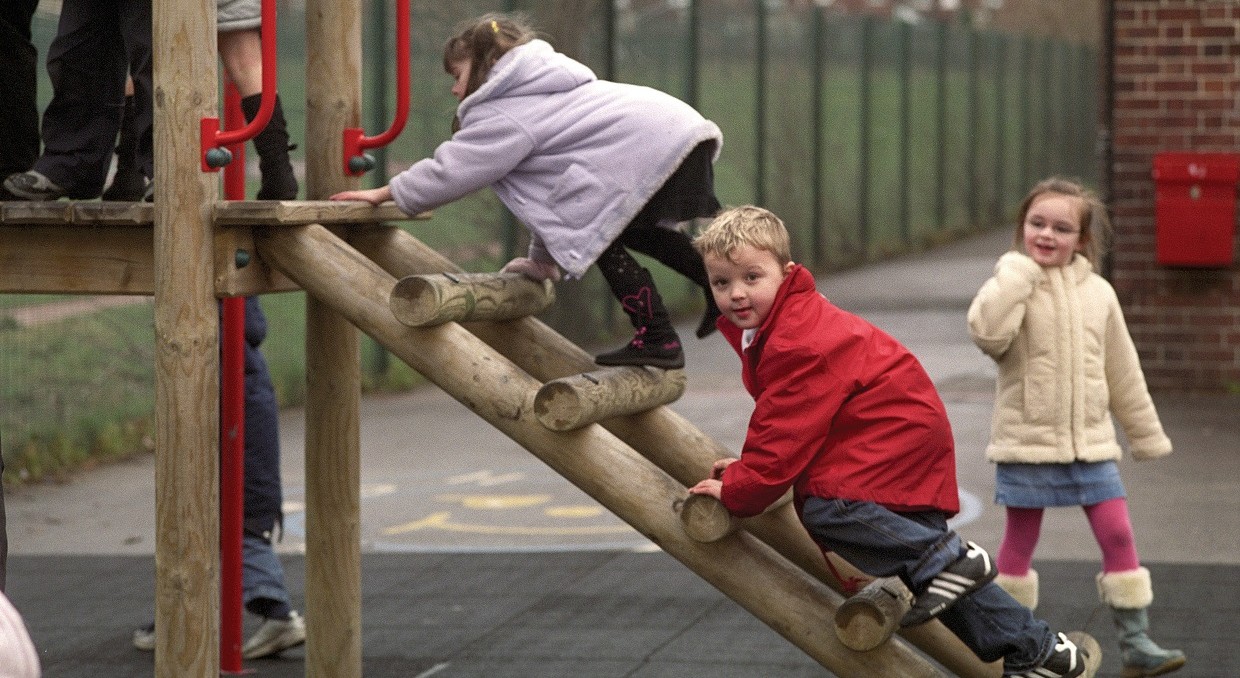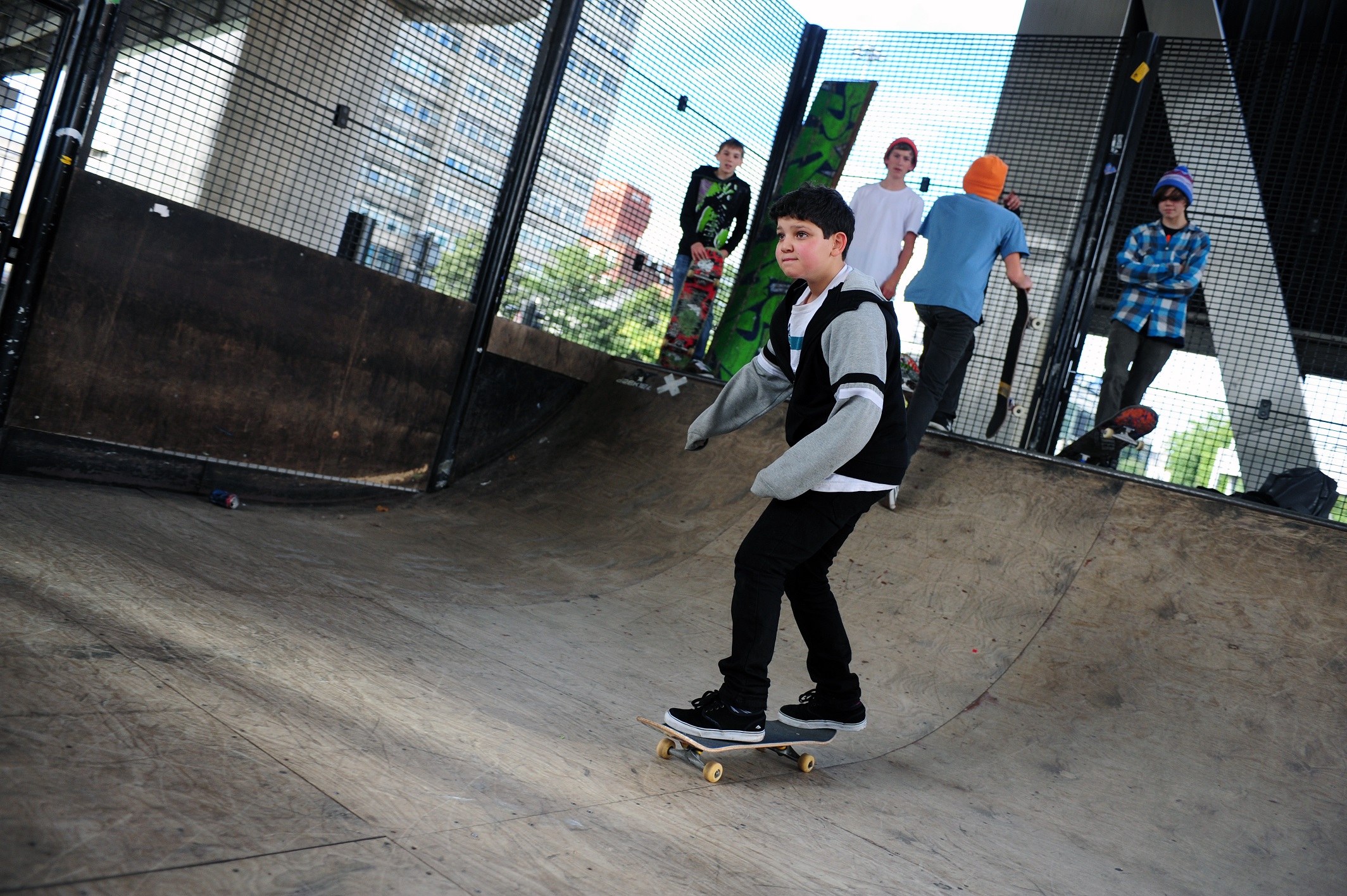With nearly a third of UK children aged 2-15 classed as overweight or obese, and with children becoming obese earlier, encouraging children to exercise is both necessary and responsible.
In my opinion, children can and should be encouraged to exercise, and even use the gym – if it is done under supervision and they are given age appropriate exercises to do.
The benefits are not just about maintaining a healthy weight or keeping fit; children who exercise regularly will also benefit from reduced stress, better mental health, higher self-esteem and improved sleep. By getting children to enjoy moving more and into a routine of increased daily activity, they are more likely to exercise regularly when they reach adulthood.
0-1 years
Being encouraged to move more can start from a very young age – even babies should be active throughout the day. If they aren’t mobile yet, encourage them to reach, grasp, pull, push and move their whole body during floor play and tummy time.
6 months-2 years
As soon as children can walk on their own, they should be encouraged to be physically active for at least three hours a day. Don’t worry, this can be spread throughout the day (!) and should be a mix of light activity (standing up, moving around, rolling and playing) as well as more energetic movement.

A great way to get toddlers moving is through active play. Taking them swimming, to the adventure playground, playing ball games or chase – it will all help. Some leisure centres offer classes for babies and toddlers. Toddler classes should be aimed at having fun and being creative, rather than pushing strict structure and form. If a child enjoys their sessions, they are more likely to keep wanting to go.
Getting your toddler active will also help develop their motor skills, co-ordination, language skills and co-operation. Classes are a great place to socialise and make friends.
3-5 years
Children aged three to five should also be moving for about three hours a day. Too much time sitting down (in the car, watching TV, on a tablet or in the buggy), is not healthy and can impact their development. As your child grows and their motor skills become more refined, they can participate in longer classes – these should still focus on having fun, but some basic skills may start being taught. At home (or when you’re out and about) encourage them to be active – run around, ride a bike, dance, jump up and down, skip with a rope or climb a tree – it all counts.
6-12 years
As children age, they can make more decisions about what activities they like. They need to be active for at least an hour a day, every day. This should include a mixture of moderate activity (walking, playing outdoors, riding a scooter, skateboarding, cycling) and vigorous activity (chase, fast dancing, swimming, running, gymnastics, football, rugby and martial arts). If your child isn’t a fan of team sports, they could join a local running club or cycling group – these are great ways to get the whole family involved.

Three times a week children in this age group should also undertake exercise to build strong muscles, such as swinging on equipment bars, gymnastics, yoga, rock climbing, football, tennis and tree climbing. Before children hit puberty, they shouldn’t do resistance exercises (like sit ups, press-ups or using weights/weight machines), as they don’t have the hormones to build muscle.
13-18 years
Children aged 13-18 need to continue with an hour of exercise a day – again a mixture of moderate, vigorous and muscle strengthening activity. As children turn into teenagers it can be hard to motivate them, but it’s important to keep them active.
Some teenage girls drop out of exercising as they feel self-conscious about their developing bodies; some leisure centres and sports clubs have women/girl only sessions, gym areas and classes. Regular exercise can help both boys and girls feel better about their bodies and help them to become more self-confident.
At this age, children can start to exercise in a highly-structured way. Exercise or sports classes will become focused on developing and finessing exact skill-sets and, under supervision, they can start using the resistance machines and weights at the gym. Speak to your gym instructors first; they can create a personalised exercise plan suitable for each age group. It might even be worth investing in a few personal training sessions, to ensure your child learns the correct form and doesn’t damage their developing body.
However your child chooses to exercise, increased movement should be supported and encouraged – exercising regularly together is a great way to spend time as a family and get everyone fit, not just the kids!

